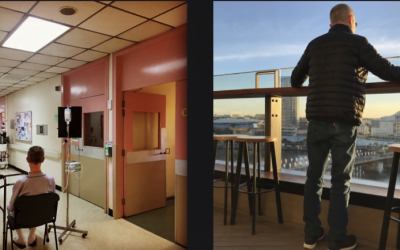
How to plan for future talent needs
The pharmaceutical industry is ever-changing. Recruiters must evolve accordingly and prepare well in advance for future talent needs.
This means predicting the changes and trends that will impact the market, industry and your organization, and how this will affect talent requirements. Identifying what skills, competencies and roles you will need in the future allows you to stay ahead of the curve.
Particularly in a competitive market like Japan, preparing well for upcoming needs will allow you to network strategically and recruit early to give you a better chance at securing top talent.
Here are 3 tips for planning for future needs:
Market mapping for future forecasting
Market mapping helps organizations identify skills gaps and plan for future talent needs. By analyzing the current talent and competitor landscape, recruiters gain a deep understanding of the talent landscape in their industry. This assists in identifying high-demand skills and experience, and those that are in short supply.
This information can help organizations plan for future talent needs and develop strategies for developing their current employees’ skills to fill these gaps.
As the job market continues to evolve, market mapping will become an even more valuable tool for recruiters to ensure that their organizations can access the talent they need to achieve their business objectives
Align your recruitment strategy with business strategy
Armed with insights from market mapping, the next step is to develop talent strategies to meet future needs. There are various frameworks and models to assist with this process, for example the talent pipeline, talent matrix, talent lifecycle models.
The purpose is to create a roadmap that aligns with your business strategy for executive search, employee development, retention and succession. Consider whether you will need to increase or decrease your workforce. Are there skills gaps that need to be filled? Do new roles need to be created? Does performance in certain areas require improvement? What upskilling opportunities are there?
It’s important that this is backed with specific and time bound goals, tasks and objectives.
Always be in recruiting mode
In Japan’s candidate-driven market, it’s important to always be on the lookout for top talent. If you have successfully mapped the market and developed a robust recruitment strategy, then you will know exactly what type of talent would be a perfect addition to your organization.
Ask for referrals and introductions, network at relevant industry events, and continue to build relationships with impressive talent. By establishing trust over a longer time period, you will be well placed to make an irresistible offer when the time is right.
Planning for future talent will be an ongoing process, with continual reviewing of recruitment strategies to analyse what is working and making adjustments. The goal is to ensure your organization is responsive and adaptable to the industry changes to remain competitive.
To future-proof your organization with a pipeline of the best talent, book a discovery session with Morunda.
Recent Posts
- Top sporting coaches and business leaders have a lot in common
- Elevating Leadership: Insights from Japan’s healthcare sector
- How to be a country manager
- Here are four things your firm can do to attract and retain top talent in Japan’s pharmaceutical and medical device industry:
- Build a Strong Employer Brand – What can you do if your company stinks?


